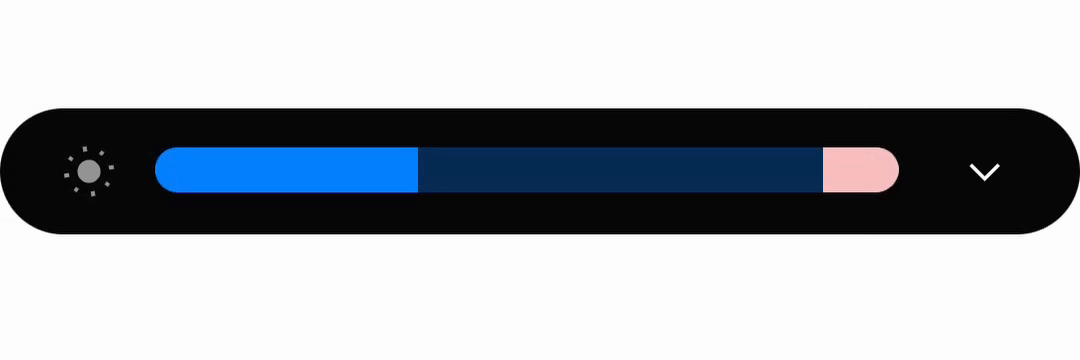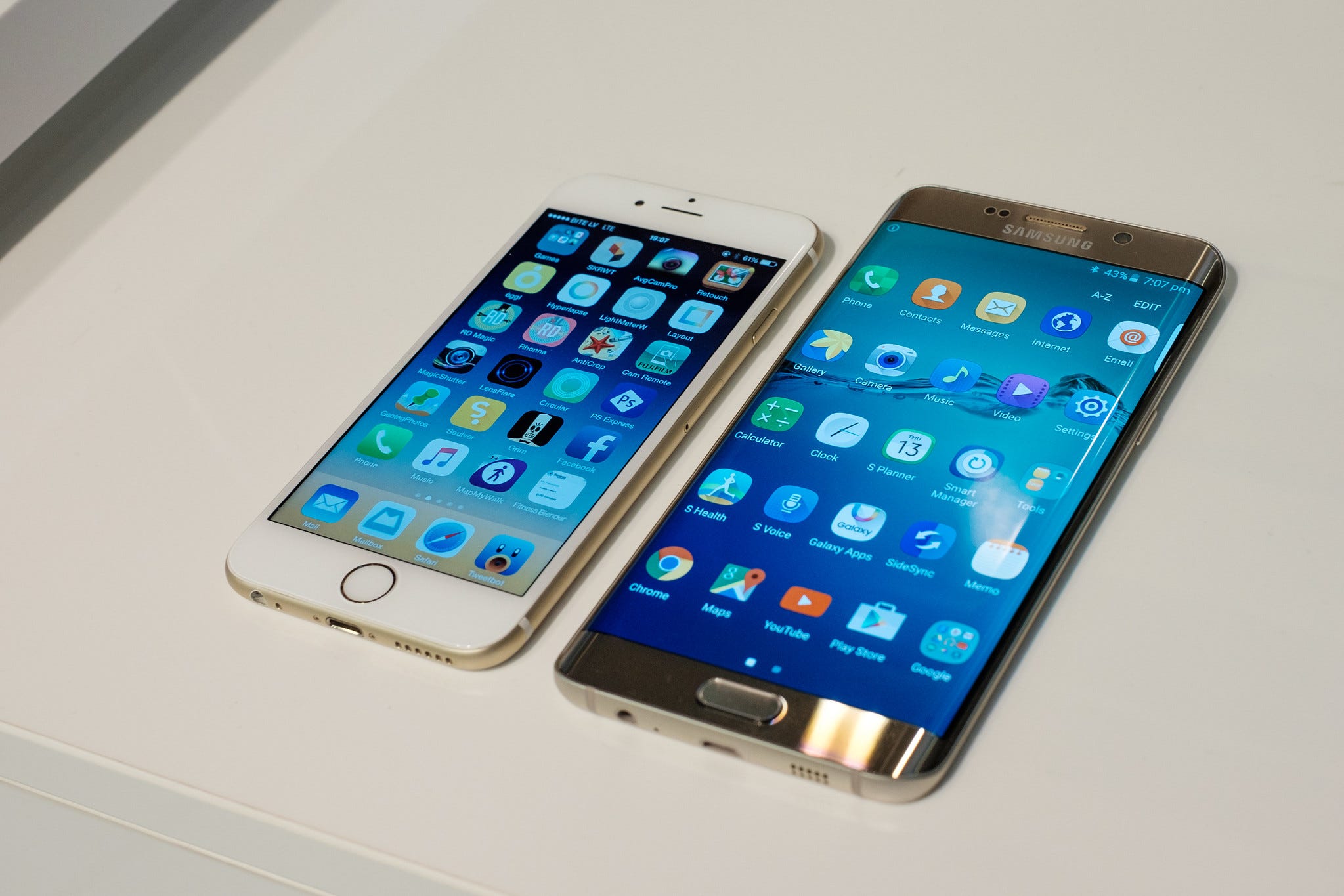ux431黑苹果
My Samsung Galaxy S10+ just got a software update. It’s now running the latest version of OneUI, based on Android 10. I haven’t felt so good using a phone since the days of the iPhone 7 Plus. Everything is fast, shiny and gesture-driven. When I change the brightness on my screen, the little “sun” icon rotates on itself. As it does so, its weight changes, becoming bolder and bolder as the brightness goes up:
我的三星Galaxy S10 +刚刚进行了软件更新。 它现在正在运行基于Android 10的最新版本的OneUI。自iPhone 7 Plus以来,我对使用手机的感觉并不好。 一切都是快速,闪亮和手势驱动的。 当我更改屏幕上的亮度时,小“太阳”图标会自动旋转。 这样做的话,它的重量会发生变化,随着亮度的增加而变得越来越大:

What’s the big deal, you say? Let’s take a step back, cause there was a time when Android was horrible, Apple ruled the world and you wouldn’t catch me dead without my iPhone. Those days are long gone.
你说什么大不了? 让我们退后一步,因为曾经有一段时间Android令人恐惧,Apple统治了整个世界,没有我的iPhone也不会让我丧命。 那些日子已经一去不回。
Until five years ago, there was only one choice for a great mobile experience, the iPhone. The same was true for computing (MacBook Air), and let’s not mention tablets. Today, the difference isn’t as clear cut anymore. For the price of an iPhone, and sometimes cheaper, you can get a Samsung or Google device which is just as sleek, user friendly and great at taking photos. If you’re willing to forgo some advanced features like wireless charging, or take a hit on build quality, there are even more choices at a fraction of the price.
直到五年前,只有出色的移动体验才是iPhone的一种选择。 计算(MacBook Air)也是如此,更不用说平板电脑了。 如今,区别不再那么明显了。 对于iPhone的价格,有时甚至是更便宜的价格,您可以购买既时尚,用户友好又能拍照的Samsung或Google设备。 如果您愿意放弃一些高级功能(例如无线充电)或对构建质量有所影响,那么您可以选择价格更低的更多选择。
The same is true for laptops. The Macbook is still king for sleekness and build quality perhaps, but Windows 10 devices are catching up fast, led above all by first party laptops and tablets from Microsoft and their Surface line. There are Chromebooks too. Once relegated to El Cheapo status and only good for browsing the net, the modern Chromebooks are fast, solid, and can run a ton of Android apps to make up for their otherwise lack of native programs. You can even run Linux in a container, a great option for developers.
笔记本电脑也是如此。 Macbook也许仍然是时尚和高品质的王者,但Windows 10设备正在Swift赶上,首先是来自Microsoft及其Surface系列的第一方笔记本电脑和平板电脑。 也有Chromebook。 现代化的Chromebook一度降级为El Cheapo,而且只适合上网浏览,它们既快速,可靠,又可以运行大量的Android应用程序来弥补原本缺乏的本机程序。 您甚至可以在容器中运行Linux,这对开发人员来说是一个不错的选择。
Of course, Apple competitors aren’t anything new. Even five years ago there were alternatives to the iPhone and MacBook combo. The only problem is that, frankly, they sucked.
当然,苹果的竞争对手并不是什么新鲜事物。 即使在五年前,iPhone和MacBook组合也有替代产品。 唯一的问题是,坦率地说,他们很烂。

On the phone side, there were two main problems with Android. First, the OS itself was often customized by vendors with their own proprietary skin, often ugly, and second, most apps weren’t as polished as their iOS counterparts. Android phones sometimes were more advanced than the iPhone, as was the case for the Galaxy Note 5, or the S6 Edge+ in the picture above, but the overall experience was terrible.
在电话方面,Android存在两个主要问题。 首先,操作系统本身通常是由供应商使用自己专有的皮肤定制的,通常很丑陋;其次,大多数应用程序不如iOS同类产品那么精美。 上图中的Android手机有时比iPhone更先进,例如Galaxy Note 5或S6 Edge +,但总体体验却很糟糕。
On the laptop side, ChromeOS was in its infancy and Windows 10 had just come out, replacing an ill received Windows 8. They both had the kinks of a new OS, either missing features or poor stability. People were then left to realistically choose between the robustness and modern design of MacOS, or the oldie-but-goodie Windows 7, with its outdated user experience.
在笔记本电脑方面,ChromeOS处于起步阶段,而Windows 10刚刚面世,取代了病态的Windows8。它们都具有新操作系统的缺陷,要么功能缺失,要么稳定性差。 然后人们就可以在MacOS的健壮性和现代设计之间,或在具有过时的用户体验的老式又老派的Windows 7中进行实际选择。
In five short years, a lot has changed. Both Google and Microsoft took a page off Apple’s playbook and started putting an increased focus on user experience. They released modern design guidelines for their respective OSes — Material Design for Android and Fluent Design System for Windows 10 — offering developers a chance to unify the feel of their various apps on target devices. Samsung too, once happy to slap heavy skins on top of Android, shifted to a lighter approach, instead focusing on micro-interactions like the one we saw at the beginning of this article, to delight their users.
在短短的五年中,发生了很多变化。 谷歌和微软都从苹果公司的手册中删除了一页,开始更加关注用户体验。 他们发布了适用于各自操作系统的现代设计指南-Android的Material Design和Windows 10的Fluent Design System-为开发人员提供了一个机会,可以在目标设备上统一他们各种应用程序的感觉。 三星也曾一度乐于在Android之上重磅打皮,但后来转而采用了一种更轻松的方法,而不是像我们在本文开头所看到的那样,专注于微交互,以取悦用户。
Apple, on the other hand, kept a conservative approach to their designs. It carried on iterating on old, proven paradigms. The only significant UX changes coming from Cupertino were the removal of the Home button on both iPhone and iPad, and the introduction of the Touch Bar on the Macbook Pro. The first introduced a number of gestures which initially confused the user, but overall contributed to updating the design of iOS devices to a more modern aesthetic. The second still comes across as a solution in search of a problem.
另一方面,苹果对设计保持保守态度。 它在经过验证的旧范例上进行了迭代。 库比蒂诺所做的唯一重要的UX更改是删除了iPhone和iPad上的“主页”按钮,以及在Macbook Pro上引入了Touch Bar。 第一个引入了许多手势,这些手势最初使用户感到困惑,但总体上有助于将iOS设备的设计更新为更现代的美学。 第二个仍然是寻找问题的解决方案。
It feels as if Apple, once a luminary in user-centered design, has strayed away from the road it helped to establish in the technology world.
好像苹果公司曾经是以用户为中心的设计大师,但它似乎已经偏离了它在技术领域建立的道路。
为此而创新 (Innovation for the sake of it)
It used to be that Samsung, Google and all the rest were copying Apple, playing catch up all the time. That’s no longer the case, as innovation outside the iOS / macOS ecosystem now happen independently of Apple. Take for instance the evolution of the notch. Android manufacturers moved away from it for a good year already, preferring round or pill-shaped cutouts for the front-facing camera instead.
过去,三星,谷歌和其他所有公司都在模仿苹果,一直在追赶。 情况已不再如此,因为iOS / macOS生态系统之外的创新现在独立于苹果而发生。 以缺口的演变为例。 Android制造商已经离开它已有好一年了,他们更倾向于将圆形或药丸状的切口用于前置摄像头。
That’s mostly because Android phones do without Face Unlock — with the exception of the Pixel 4 — but this feature is another problem in itself.
这主要是因为Android手机没有“人脸解锁”功能(Pixel 4除外),但是此功能本身就是另一个问题。
On the surface, Face Unlock looks like Apple doing what it’s doing best, simplifying user interaction. The problem is that there isn’t much to simplify in the first place, at least on a phone.
从表面上看,Face Unlock看起来像苹果公司正在做的最好的事情,从而简化了用户交互。 问题在于,至少在电话上没有太多要简化的地方。
In order to unlock a device, the user needs to interact with it, either by picking it up, or at least by waking up the screen. In any case, a touch interaction needs to take place. From a UX perspective, simplification means integrating user authentication or biometric recognition in this first action. That’s why the Home button made a lot of sense on the older iPhone. You wake it up by tapping the home button, and your fingerprint is verified. It’s a simple one-step interaction. Face Unlock adds an unnecessary second step.
为了解锁设备,用户需要通过拿起设备或至少通过唤醒屏幕来与设备进行交互。 无论如何,都需要进行触摸交互。 从用户体验的角度来看,简化意味着将用户身份验证或生物特征识别集成到该第一个操作中。 这就是为什么“主页”按钮在较旧的iPhone上很有意义的原因。 您可以通过点击主屏幕按钮将其唤醒,并验证您的指纹。 这是一个简单的一步式交互。 面部解锁增加了不必要的第二步。
In terms of UX, the Samsung Galaxy S10e and Sony’s approach on various phones make more sense. The fingerprint scanner is integrated into the power button, itself placed on the side of the phone to maximize screen-to-body ratio. If the user wants to wake the phone, she can just tap this button and instantly both wake and unlock the phone.
在用户体验方面,三星Galaxy S10e和索尼在各种手机上的使用方式更具意义。 指纹扫描仪集成在电源按钮中,电源按钮本身位于手机侧面,可最大程度地提高屏幕与机身的比例。 如果用户想唤醒电话,只需点击此按钮,即可立即唤醒和解锁电话。
This seems to sum up the problem with Apple today. Innovation seems to be an end in itself, rather than a driver for better user experience.
这似乎可以总结出当今苹果的问题。 创新本身就是目的,而不是推动更好的用户体验的驱动力。
下一步是什么? (What’s next?)
Does this spell the commercial end of Apple? No, not by any stretch of imagination. The company is healthy as their offering goes beyond just hardware, and that’s perhaps the most telling part of the story.
这是否意味着Apple的商业终结? 不,没有任何想像力。 该公司很健康,因为他们提供的不仅仅是硬件,而且这可能是故事中最具说服力的部分。
Apple’s Services segment (e.g. Apple Arcade, Apple TV+ and the App Store), is becoming a crucial component of their bottom line. In the past holiday quarter (Q4 2019), Services brought in more revenue for Apple than Mac and iPad combined, although the iPhone segment is still the leading money maker beating the other two individually by a factor of about 3:1 (for those interested in numbers: Services = US$12.5bn, Mac / iPad = US$11.65bn, iPhone = US$33.36bn).
苹果的服务部门(例如Apple Arcade,Apple TV +和App Store)正在成为其盈利的关键组成部分。 在过去的假日季度(2019年第四季度)中,服务为Apple带来的收入比Mac和iPad的总和还多,尽管iPhone仍然是领先的赚钱者,分别以其他3:2的比率击败其他两个(对于有兴趣的人而言)数量:服务= 125亿美元,Mac / iPad = 116.5亿美元,iPhone = 333.6亿美元)。
These Services aren’t even tied to Apple hardware. You can play Apple Music on your Amazon Echo device today. Same goes for Apple TV+ shows on the Amazon Fire TV stick and cube.
这些服务甚至都与Apple硬件无关。 您可以立即在Amazon Echo设备上播放Apple Music。 亚马逊Fire TV电视棒和立方体上的Apple TV +节目也是如此。
Apple might be getting ready to shift their focus once again, and take a backseat in the hardware market. Perhaps the iPhone will become the niche device in a sea of Android smartphones, like the Mac was the graphic designer’s PC in a world dominated by IBM compatibles in the 1990s. Maybe they’ll both be replaced by something new, eventually.
苹果可能正准备再次转移他们的关注点,并在硬件市场上处于倒退地位。 iPhone可能会成为Android智能手机中的利基设备,就像Mac是1990年代由IBM兼容机主导的图形设计师的PC一样。 也许最终它们都会被新的东西所取代。
One thing is for sure, Samsung’s hardware today is as delightful as Apple’s, and so is Google’s and even Microsoft’s. That might be disappointing for particularly hard-core fans, but it means more people get to experience a delightful UX regardless of their spending power. It’s a democratization of design beyond both brand and price-point.
可以肯定的是,如今三星的硬件与苹果的硬件一样令人愉悦,谷歌甚至微软的硬件也是如此。 对于特别是铁杆粉丝来说,这可能会令人失望,但这意味着无论他们的消费能力如何,都会有更多的人体验到令人愉悦的用户体验。 这是超越品牌和价格点的设计民主化。
As devices increasingly become a blank canvas on which to paint the user’s intended use case, that’s not a bad thing. Apple then becomes just a fashion brand like Burberry, not the gold standard that everybody tries to mimic. With that, the risk of poor design decisions becoming the industry norm is also diluted.
随着设备越来越成为绘制用户预期用例的空白画布,这并不是一件坏事。 苹果随后成为Burberry之类的时尚品牌,而不是每个人都试图模仿的黄金标准。 这样一来,不良设计决策成为行业规范的风险也得到了降低。
In the end, whether there is a market leader in UX design is less important than having a good design practice across the industry. For that, we still need to thank Apple as it created the right environment that made Material design, Fluent Design System, and OneUI possible.
最后,是否在UX设计中拥有市场领导者并不比在整个行业中拥有良好的设计实践重要。 为此,我们仍然要感谢苹果公司,因为它创造了使Material design,Fluent Design System和OneUI成为可能的正确环境。
翻译自: https://uxdesign.cc/the-decline-of-apples-leadership-in-ux-design-b4ad1d24c953
ux431黑苹果




















 2049
2049











 被折叠的 条评论
为什么被折叠?
被折叠的 条评论
为什么被折叠?








